Saturday 23rd January 2021

We’ve heard a lot about “at pace” over the last ten months. I’m old enough to remember when PPE was being sourced “at pace”; when PPE was being rolled out “at pace”; when testing was being ramped up “at pace”; when laptops were being distributed to school children “at pace”; now, it’s hugely impressive to see the much welcome vaccine roll-out “at pace”. But sadly, it’s not been such a good news week for coronavirus death rates which also seem to be increasing “at pace” with most days bringing an alarming new daily record high.
As London’s hospitals become ever more stretched news came this week of Go-Ahead London providing two single deck Enviro 200 MMC buses as makeshift ambulances to transfer patients between hospitals, and in particular to the London Nightingale field hospital at the ExCel Centre. The ‘exclusive’ news story carried in The Guardian newspaper on Thursday reported “most of the seats on the single-decker buses have been removed so that each can carry four patients, in an attempt to relieve the intense pressure on hospitals and the London ambulance service”.

Those that know about these things report the electric buses (fleet numbers SEe 6 and 10) are usually to be found on Red Arrow routes 507 and 521. Apparently Go-Ahead London are providing four drivers for the project and was “inundated with offers from its drivers to help”. The buses will be staffed by doctors and nurses who work for the NHS ‘Specialist Retrieval and Intensive Care Transfer Service’ (Sprint) set up last March for the eventuality of needing to transfer passengers between hospitals. Instead of wifi and the the usual usb sockets and next stop announcement screen, patients being moved on the buses will find infusion pumps and monitors on board so their condition can be continually observed. Apparently patients using the buses are likely to be ready to receive ‘step-down’ care before being discharged. No fares are being charged!
The Guardian added “it is thought to be the first time any part of the NHS has had to use specially adapted buses like this to move patients around” but of course us omnibologists know better, as this extract from the London Transport Museum confirms. “T-type Green Line coach used to evacuate patients” in World War II.
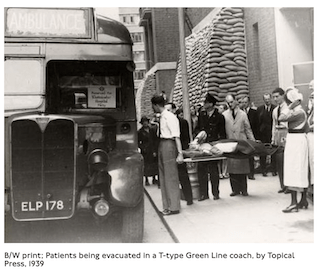
Still in London, Tuesday brought supposed reassuring news from TfL of 90% compliance with face cover wearing on its services. That doesn’t sound very reassuring to me. Ten-per-cent of even TfL’s reduced passenger numbers is still a lot of people; and they can’t all be exempt.
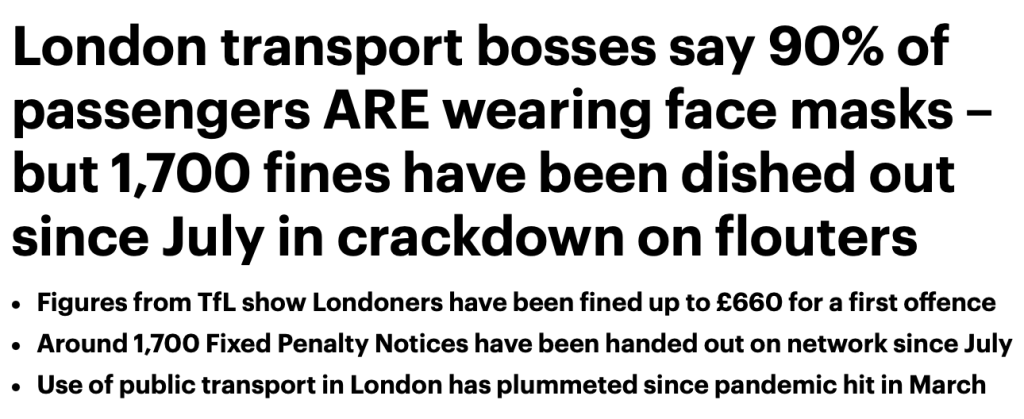
Apparently there’s now a step up in enforcement with news of 1,700 fixed penalty notices issued by enforcement officers since July for non compliance. Taken over the 210 odd days since then, that’s an average of just eight fines issued each day. I mean, seriously? It sounds like a woeful level of enforcement, bearing in mind all the images of high-vis wearing enforcement officers and police which accompanied the story in the media. There were as many officers as fines issued in a day at just one bus stop. If I’ve got my noughts in the right place, I reckon there’s well over 2.5 million passenger journeys on TfL’s extensive network every day even under current reduced levels of travel. That’s 250,000 (at least) non face cover wearers.

Perhaps the low number of fines reflects enforcement being a complete legal minefield with any Smart Alec passenger exempt for one medical reason or another who wants to be awkward able to use “human rights” legislation and threaten discrimination under the Equality Act and refuse to show, or even carry, proof of entitlement to exemption.
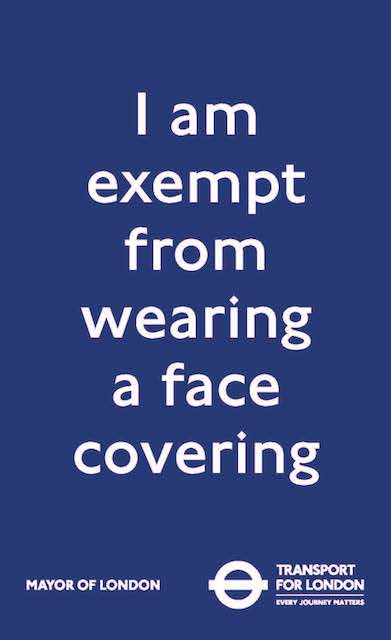
This arises from confusion in the Gov.uk guidance which, on the one hand, states: “The Police can take measures if members of the public do not comply with this law without a valid exemption and transport operators can deny access to their public transport services if a passenger is not wearing a face covering, or direct them to wear one or leave a service”. Then, on the other hand it states: “Carrying an exemption card or badge is a personal choice and is not required by law”.
The confused minefield (if you can have a confused minefield) continues elsewhere in the Guidance stating in one place: “where you must wear face coverings it is the law that you must wear a face covering when travelling in England on public transport” and in another “….Government and some operators have produced cards and badges which you can choose to wear to show you are exempt. There is no requirement to do this though, and if you rely on an exemption, transport staff should not ordinarily ask for evidence“.
Maybe that’s one reason why only eight Fixed Penalty Notices are being issued a day in London, and probably even less elsewhere – it’s not worth the hassle of a legal fight with the awkward know-it-all squad. Here’s a controversial view that will get the human rights fanatics going …. we need to urgently change the law to make it a legal requirement that those exempt (from wearing a face covering) must carry such proof of exemption with them and show this on any reasonable request to so do. Without this, there’s no chance of transport staff being able to intervene nor enforcement officers or the police to enforce. Meanwhile selfish ‘Covidiots’ get away with endangering others.
All this comes as déjà vu scenes of packed Jubilee Line platforms were circulating on social media again on Monday morning, this time at West Ham.

The campaign to encourage construction sites to shift their start times was stepped up in an effort to reduce peak demand, but this can’t be easy to achieve in practice at a time of year when daylight hours are still fairly limited. Most sites operate an 8am-4pm day with not much scope to change during the winter.

Nick Dent, London Underground’s Director of Line Operations was quoted: “we are working with Newham Council to look at how working patterns in the Borough could be changed to help ease any crowding during busy times. we have also urgently contacted large employers in the area including Amazon, Sainsbury’s and Royal Docks to urge them to stagger shifts and operating hours to enable those who have to travel to work to do so in the quieter times”.
One observer made the point that the situation is not helped by c2c’s reduced service meaning their trains arriving from Essex commuting towns at West Ham now disgorge more passengers per train who change to the Tube in one mass. That sounds like a good point.
Still in London, it was announced that TfL have dropped proposals to make all ticket machines cashless which will be especially welcomed by those without access to a bank account or able to keep much of a balance on an Oyster card. London Travelwatch expressed disappointment no date was set to re-instate cash at stations where it’s been removed as a temporary measure.
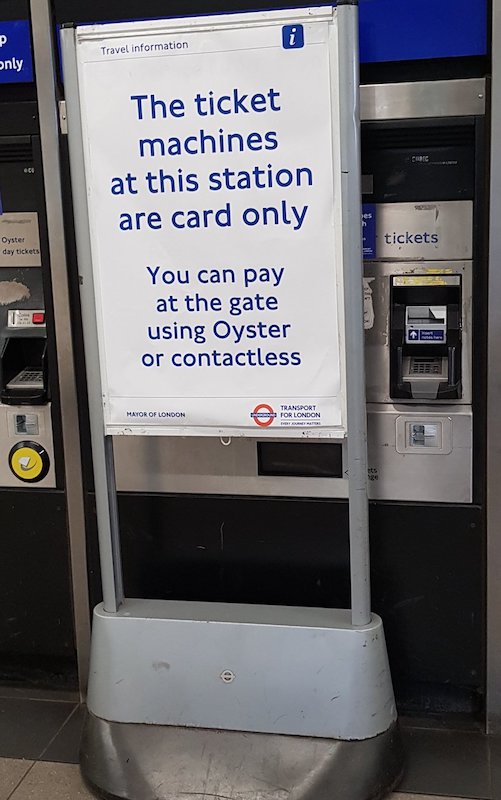
Elsewhere more train and bus companies have been announcing reduced service levels this week with the DfT encouraging the process (no doubt in turn encouraged by the Treasury) with the former sending out letters to all bus operators and local transport authorities insisting they make contact with each other to discuss reductions in service levels across networks. And just to make sure, bus companies are required to complete a survey and tick the boxes confirming they’ve done what they’ve been told.

Among the notable reductions reported this week are from next Monday the complete withdrawal of Green Line branded route 702 (operated by Reading Buses) between London Victoria, Slough, Windsor and Legoland. Green Line 703 between Bracknell And Heathrow Airport Terminal 5 continues with a Saturday timetable. Reading Buses are also withdrawing its Winnersh Park & Ride 500.
Relief all round at Eurostar’s HQ on Thursday with the French Government pledging to “be there at Eurostar’s side to maintain this strategic link between our two countries”. Eurostar which has seen revenue plummet to around 5% of normal levels with the 30,000 normally travelling each day between London, Paris, Brussels and Amsterdam currently down to around 200 to 300 on just two return services a day. Controlled by French state railway SNCF (it owns 55%), the company was at risk of bankruptcy, running out of cash by the summer. Shareholders have already pumped in £178 million to keep the company afloat. The DfT had been quoted earlier in the week: “the government has been engaging extensively with Eurostar on a regular basis since the beginning of the outbreak. We will continue to work closely with them as we support the safe restart and recovery of international travel”. So that’s all good then.
This week’s DfT statistics show passenger journeys in England very consistent with last week with rail on 13%, Underground on 16%, TfL bus on 32% and bus outside London on 27%. Car traffic is at 57%. All still way up on last March’s lockdown.
More upcoming bus branding news, and this week from Go North East “as part of ongoing work to get us in the best place for our long term recovery” there’ll be a “core colour theme” for each area with yellow for Consett, orange for Hexham, blue for North Tyneside, green for Gateshead, purple for Peterlee and red for Sunderland/South Tyneside which will all sit alongside the X-lines brand. Next area for a refresh is Washington with a vibrant pink colour which will appear on Connections 4 (paired with blue) and minibuses in a new ‘Little Pinks’ brand”.
It’s been a busy week for Chartered Institute of Logistics and Transport (CILT) followers, with three interesting online ‘regional’ meetings on consecutive evenings.
Tuesday saw Eamonn Hughes founder of tech company uTrack give a fascinating insight into the world of Bus Open Data which, of course, is now fully open following recent deadlines by when all bus operators must have uploaded details of routes, times, (simple) fares and location data. This can now all be accessed on the DfT’s website, and hopefully even understood by those with the necessary geekery.

But, importantly, and as Eamonn explained in a very engaging non-technical presentation, this will help to “make public transport amazing” – which just happens to be the mission statement of his company – through new formats, apps and, hopefully, more easy-to-understand websites than at least one major International transport Group currently provides.
Wednesday saw CILT and the Rail Study Forum facilitate Transport Focus Chief Executive Anthony Smith provide an excellent assessment of how he saw the rail industry panning out post Covid. Anthony answered a whole host of questions from those participating with alacrity and a huge dose of common sense. He reckoned we’re in for a further six months of what he called a “messy period” until vaccine roll out is more extensive and then “we have the fight of our lives” to get passengers back with a need for a “different, smarter industry” which would “have to be agile” and rethink some long standing ways of working.
Anthony made the pertinent point that with commuting levels almost certain to be reduced there’s likely to be an increase in leisure travel at weekends calling into question the validity of major engineering works taking place on Saturdays and Sundays. He also opined now is the time for fares and ticket reform with his favoured option of single journey pricing (rather than returns being 10p more than a single) and noting “the annual season ticket must now be dead”.
Eurostar –“there’s a need to keep it warm”; HS2 – “it’s being built for the next 100 years”; Integration between modes – “crack each mode first and worry about integration in the longer term”; Reservations only on InterCity – “no; we need a turn up and go railway”. Electrification programme – “passengers would prefer a diesel train on time than an electric one that isn’t”. Finally Anthony made the interesting observation that “the way we used to live was quite mad … everyone commuting into work as the same time”. He believes experiences of working from home will lead to a complete rethink of when and how often people travel in the future. “Are we really going to remodel East Croydon at a cost of £1.6 billion?”
Thursday’s CILT webinar was its London Region addressing ‘The Bus Route to Recovery’ with the highly respected Chris Cheek sharing his extensive knowledge and wisdom and a whole host of statistics and information to put everything in context. Chris outlined the likely future of each category of journey purpose: work snd business trips; education; shopping; personal business; leisure . Just taking travel to work as an example, Chris assesses the new work-from-home era (say, two days at home and three at work) will mean a reduction of 2.7% of passenger journeys (also taking account many bus passengers are in ‘blue collar’ jobs necessitating physically being at work) and increased unemployment could see a further 1.2% reduction. Similar depressing outcomes are likely from downturns in shopping – another key market for bus. But, on the upside, if the Government are serious about carbon reduction and achieving the ‘Carbon Budget 6’ requirement of a 9% reduction in car miles by 2035 rising to 17% in 2050 – even if just 1% of car demand switched to bus that means a 23% increase in bus use. And, if there was a full 17% switch, we’d see a 384% increase in bus passengers by 2050. Not bad eh?
Chris also let slip the stark reality for the future of rail travel as a consequence of the downturn in commuting. Rail carries 1 billion commuting trips each year with a further 176 million business trips. The latter are particularly at risk with the advent of Zoom, Teams etc and Chris observed those 176 million trips are worth more in pounds than the 1 billion commutes. A sobering thought. what future for first class coaches on trains in the future?
It’s also been a busy week for the Orange Army working on the East Coast Main Line upgrade during a nine day project to install the dive-under bridge at Werrington, just north of Peterborough. With the main line’s tracks removed and reduced ECML services operating on two tracks to the west, normally used by Stamford bound trains, engineers are carrying out a quite remarkable feat of transformation by literally sliding the new bridge structure into place under which freight trains to and from the line to Spalding will pass without conflicting with the main line.

Photos and video on social media show this impressive work in action.

Disruption to the East Coast Main Line is scheduled to be completed tomorrow.
And finally for this week , despite raging rates of infection in the UK, Europe and India, it’s all systems go for arrangements for ‘Bus To London’. Although the departure date has been delayed until August, I received an email on Tuesday letting me know there were (allegedly) just 5 seats left on the Delhi to London road trip and I’m “just one step away” from being part of this historic journey.
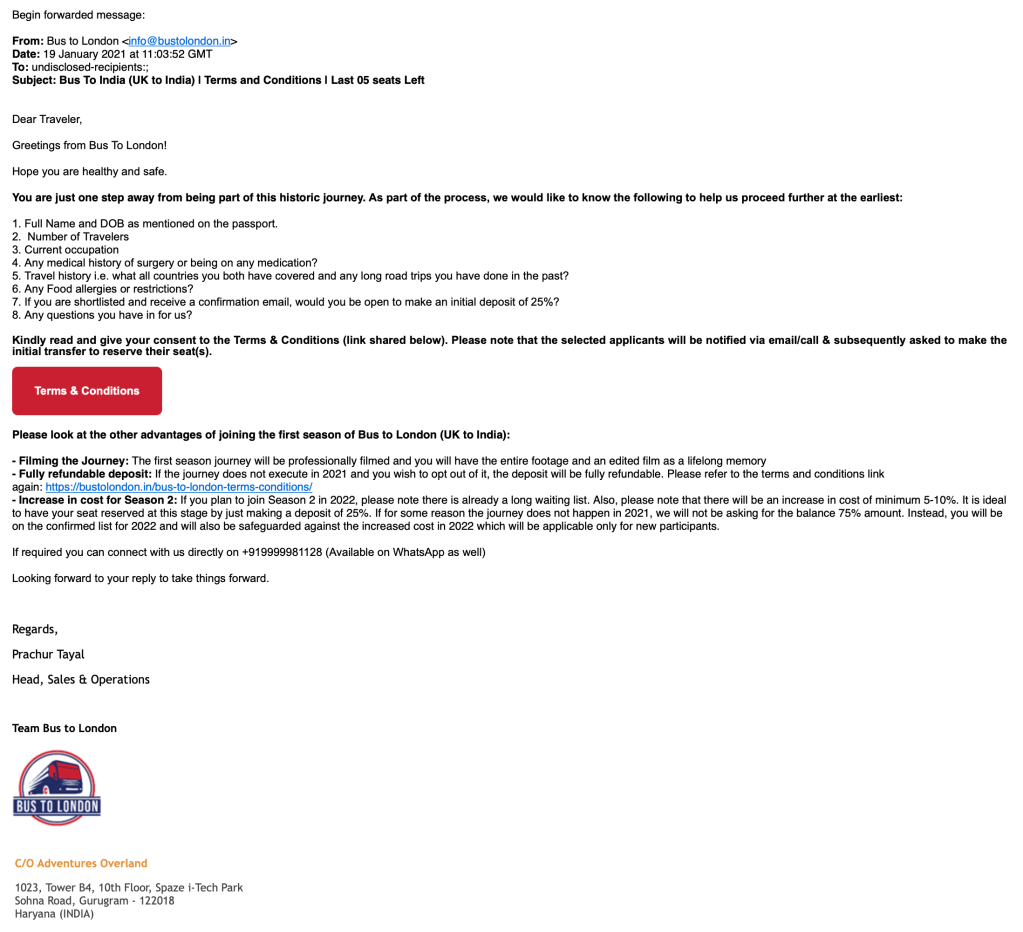
I think I’ll forgo the opportunity this time round as once we’re allowed back out again, to make up for the current hibernation, I’m looking forward to travelling around the UK … “at pace”… naturally.
Roger French



Sorry to see you fall for the selfish ‘Covidiots’ story, so obviously a PR diversion from the failure to anticipate commuter over-crowding being exacerbated by this week’s reduced timetable – which you mentioned second.
Definitely a win for this incompetent/oblivious/divisive government’s PR machine.
Given the careless/deliberate mixed messaging (which you helpfully identify), compliance is remarkably high and just about adequately effective.
But far better social media (today’s equivalent of your local pub/school gate debating group) should fixate on blaming their neighbours than concentrate on the ineffectiveness of test’n’trace in this country, when it’s well-managed well-resourced test’n’trace that has rescued countries like South Korea.
LikeLiked by 1 person
Can’t comment on London, but in my bit of the East Midlands 10-15% of the passengers on the trains I drive are not wearinfg any sort of face covering at all, and my conductor colleagues tell me the “reason” most give when challenged is “asma-innit”. We all rather suspect that is not in the slightest related to the medical condition asthma,
Personally I’m rather more narked by the people (of all age groups) who seem to believe that a face covering is effective if worn around the chin or, at best, just under the nose, which easily accounts for another 20-25% of my passengers. I can only assume they all believe that masks act as some form of all-over body armour as long as they’re worn somewhere, anywhere vaguely near the face.
But to be honest I’ve completely given up on people. If they don’t understand by now, it’s far too late,
LikeLike
Roger, I think the Guardian may be technically correct about patient transport, as the NHS didn’t exist until after the war.
LikeLiked by 1 person
Good point!!
LikeLike
Anthony Smith’s remarks regarding the death of the annual pass is interesting in a bus context too.
There is a need for simplification of bus fares in many areas with post Covid presenting a good opportunity for a re-think. The traditional distance based scales for singles/returns, augmented by better value weekly/monthly/annual ticket model should be replaced by simple, good value (Flat) singles/day tickets. Such an approach, already applied in London (heavily subsidised), Birmingham and Edinburgh, are much easier to communicate/understand and provide good value for those trying the bus for the first time (which we need now more than ever!) and/or those who travel infrequently (the latter which will increasingly apply to more of us).
LikeLike
Tube overcrowding: I am surprised that special bus services have not been introduced to parallel overcrowded sections of the tube
LikeLiked by 1 person
I read some analysis that showed the increase in cases corresponded closely with the return to work in the new year rather than the Christmas relaxation. This is bad news for pt.
As for exemptions, it would not be unfair to refuse travel to those not wearing any face coverings. Not killing people must trump not having to produce evidence of exemption.
LikeLike
Anyone remember the Leyland National Lifeliner a leland national bus body and running gear with air operated ssuspension that could be raised to travel over undulating ground, with a stretch er lift at the rear window and a Hovercraft on the roof.
THe NHS couldnt afford it and thought it was better to have scoop and run transits at a lower cost, it got stripped out and gien to Midland Red.
Also the construction workers all starting at the same time, they usually all need to integrate with each others trades and skills to work as a unit, eg crane drivers need to be there same time as loader, loaders need to be there same time as those doing the constructon, foremen need to be there same time as workers its a huge triangle, where as office workers and desk jockeys can easily work flexible hours and weekends nights etc, or even 12 hour shifts, like care workers and transport drivers do.
LikeLiked by 1 person
The NHS, usually the Ambulance service, has on occasions requisitioned service buses to take ‘walking wounded’ to hospitals after major incidents such as terrorist attacks. These two SEe buses are probably the first time they have been converted specifically for NHS work
LikeLiked by 2 people
Roger as usual a fine read–I am a new reader who used to work for GNE until retirement in 2019-They are certainly way ahead o f the other two operators in the North East of course.I just do not like branding of each individual route and prefer Company branding with maybe high profile routes succumbing to branding.
LikeLiked by 1 person
Yes: https://s1.busphoto.eu/photo/02/51/53/251538.jpg
LikeLike
First class on trains in the future? On many routes it will die a death, but on longer-distance Inter-city routes it could be a premium leisure travel product if it is priced and marketed effectively.
I would suggest that for all train travel “Anytime” fares be abolished, the standard walk-up/flexible fare be set at current off-peak levels (or thereabouts; there is also scope for dramatically simplifying fares). Advance-purchase products should only be made available to travel at what would currently be considered “off-peak” times. Annual season tickets should also be abolished, period tickets should be a standard 7/30/90 days and multi-journey tickets offering 10/40/120 rides for the price of 9/35/100 be made available.
LikeLike
Why should annual tickets go? that makes no sense
LikeLike
Bus converted into mobile vaccination centre
Not entirely sure I understand the logic of this Crawley is not exactly very rural. It could make sense in very rural areas but Crawley ?
The scheme, launched in Crawley, West Sussex on Thursday, is a collaboration between the NHS, Metrobus and the Alliance for Better Care (ABC), which represents GPs.
It is said to be one of the first in the UK.
LikeLike
Crawley itself may not be rural but it has a large rural hinterland.
LikeLike